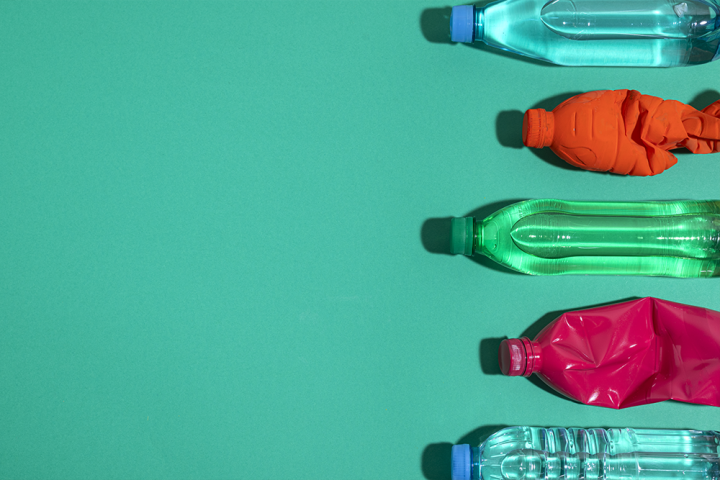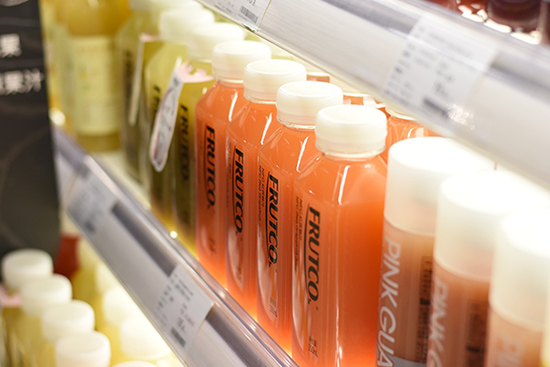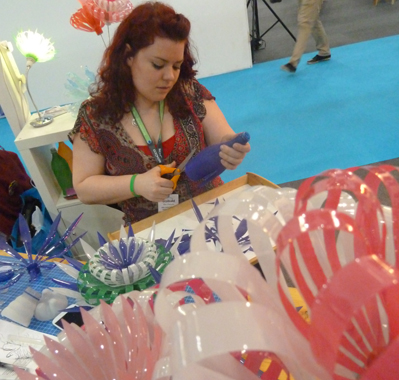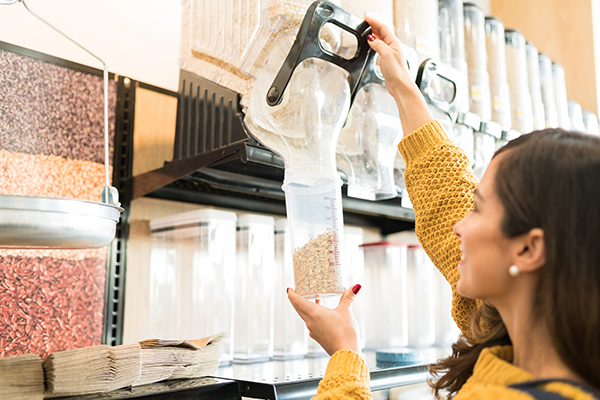
Packaging: it’s not all rubbish
Single-use packaging has been subject to a lot of criticism for a number of years, and it carries an unduly negative image, especially when it’s made of plastic. While plastic packaging waste management — and waste management in general — remains a major environmental and economic challenge across the globe, this same packaging plays a crucial role in protecting products, preserving food and keeping consumers safe. Plastics make excellent barriers against bacteria, oxygen, UV rays and humidity, and they’re the best and longest-lasting way of protecting foodstuffs from spoiling (Packaging in search of greater virtue). This ultimately means less waste and better food safety. Another unrivalled advantage of plastics is their light weight, which helps minimise greenhouse gas emissions linked to product transportation. Though there are a few rare exceptions, replacing single-use plastic packaging with alternative materials isn’t necessarily a solution…

Thanks to their barrier properties, plastic packaging is the best way to preserve food and avoid a lot of waste. |
Instead, the solution is more likely to be found in reusable alternatives, which, like their recycled counterparts, are gaining ground. Many brands are taking an interest in them, especially in Europe, where there are a few scraps of national legislation that strongly encourage reusable options (and businesses are anticipating the European Commission to rightfully include reusable alternatives in future regulations on packaging and packaging waste). Though reuse might seem simple on the surface, this revolution goes far beyond our shopping trolleys; it’s a question of changing our consumer habits, and it depends upon high-tech innovations happening behind the scenes. Once again, plastics have some key advantages in this regard.
Taking the wraps off reusable packaging
Exactly what constitutes packaging reuse varies from country to country. As the name suggests, it involves extending the lifespan of packaging through refills.

Not all plastic packaging is intended for single use — far from it! With the rise of unpackaged goods, it’s perfect for domestic use. |
This can be done by the consumer (either at the point of sale in the case of unpackaged items or at home via refill systems) or by the manufacturer at their production centres.
Some countries, such as France, make a distinction between reuse and repurpose.
The former refers to products (packaging or other) that are reused for the same intended purpose without first being considered waste. |
One iconic example is SodaStream, a company that’s developed a machine that allows consumers to make their own fizzy drinks at home, thanks to its CO2 gas cylinder. The brand offers different types of bottles that are mainly made from PET, the same material used to make its single-use counterpart. As well as being recycled and recyclable, the PET used in these bottles has the added advantage of being dishwasher-safe. Any reuse scheme requires products that are easy to wash, whether that's at home, in-store or on industrial premises.
|
The PET SodaStream bottle is reusable, washable at temperatures high enough to guarantee safe reuse and, ultimately, recyclable. It ticks all the right boxes, which is no small feat. On top of that, since the consumer fills it at home, the carbon footprint associated with refilling the SodaStream is virtually zero. |

Popularised by SodaStream, reusable bottles are gaining popularity year after year. |
On the other hand, repurposing refers to products that first become waste and are then used for an alternative function. One interesting example is the “solar bottles” used in the Philippines and some African countries. In the most deprived areas of these countries, houses can consist of just four brick walls with a tin roof and no windows.

|
By piercing the roof and attaching a plastic bottle filled with water and bleach (to prevent the proliferation of bacteria that would cloud the water and prevent light from being properly refracted), light is diffused throughout the house by refraction. Each bottle produces the same amount of light as a 50-watt bulb.
|
Another example, still in Africa, is a German NGO that builds houses by replacing bricks with bottles filled with sand and grouted with mud or cement. This technique cuts manufacturing costs by 75%.
When it comes to packaging, repurposing still remains mostly anecdotal. A handful of designers utilise the transparency and colour of polymer-based packaging and turn it into aesthetically pleasing objects, such as plant pots, lamps and jewellery. This is known as upcycling.

Upcycling is very much on trend, especially when it comes to plastic materials, and many designers are now getting on board. |
Whether reused or repurposed, these products and/or packaging can ultimately be recycled (see recycling article).
Plastics really are all that and a bag of chips
France is the most pro-reuse country in Europe, and since the start of 2023, the entire hotel and catering sector has been banned from serving drinks and meals consumed on the premises in disposable packaging.
|
Following this injunction, the McDonald's fast-food chain decided to replace its disposable packaging with a reusable alternative… made from plastic.
The iconic McDonald's chip cone is now moulded in polypropylene, an ultra-resistant material that can withstand grease, high temperatures, salt and repeated washing. The rest of the reusable tableware is made from a transparent copolyester called Tritan, which is also highly resistant to the detergents needed to wash it. |

McDonald's made headlines in France at the start of the year when it became the first to provide reusable tableware in its restaurants. |
The fast-food chain has equipped itself with professional dishwashers that wash the tableware at a high temperature of 60°C before rinsing it at 80°C to ensure a perfect wash — and they do all this in a matter of minutes.
The plastic cup: an event essential
There are also options for those who are reluctant to buy a dishwasher, usually due to lack of space. For example, Re-uz, known for its reusable cups, is rolling out washing centres across Europe, with a focus on France. The company has set up a network of local centres in the countries where it operates so it can provide its customers with washing services as locally as possible, limiting the environmental impact of washing its cups. Re-uz also offers “mobile washing”. All these services caught the attention of the Paris 2024 Olympic and Paralympic Games Organising Committee, and Re-uz has now signed an official partnership agreement with them. For this event, the company has committed to supplying 13 million reusable polypropylene cups and food containers, as well as handling the logistics of their delivery and cleaning.

Reusable plastic cups and mugs are becoming an essential part of large events like festivals and even the Olympic Games. |
This is a major innovation because, until now, the thousands of cups used at large public events (festivals, concerts, sports events, etc.) were simply considered waste. These single-use designs, made from cardboard and PLA or polypropylene, are not suitable for reuse because of their thin, fragile walls. This new polypropylene cup was introduced to festivals in the 2000s, the idea being that once the consumer had finished with it, they could return it for a refund. The return rate is 70%, and very few of the rest end up in the bin — since they’re often branded in the event’s signature colours, they make a cheap souvenir.
Refillable packaging: the new foundation of the cosmetics industry?
Packaging design is almost as important as the product itself in the cosmetics sector, especially when it comes to marketing. This is partly why the sector has been working to make its packaging more eco-friendly, opting for monomaterials, bio-sourced materials and recycled materials, including polymers. However, in many cases, the packaging remains single-use.

In recent years, refillable pots and packaging have almost become a requirement for leading cosmetics brands. |
In response, some brands have started using “refillable packaging” consisting of a case, which can be kept and used as a jewellery box, and a refill, very often made from PMMA or even polycarbonate. Both of these are transparent, durable polymers that are relatively easy to recycle when recycling channels exist. If they don’t, then these materials will be recovered as energy. |
The Spanish company Faca Packaging offers refillable, recycled PMMA packaging for cosmetic creams.
The refilling trend is becoming more widespread, with leading luxury brands such as Dior and Chanel now offering refillable lipsticks and mascara. These haute couture brands are choosing to use PET, a polymer used by many lipstick case manufacturers — the perfect material for the job, even if it sounds a little less upmarket.
|
Make Up For Ever also offers a refillable eyeshadow palette. On top of saving on materials, it also offers consumers the opportunity to change their eyeshadow palette as many times as they like while keeping the same case. These products have a pretty good life cycle since the weight of the refills is considerably less than that of the cases. Plus, since they’re smaller, they require less space during transportation, which also means fewer lorries on the road. |

Make-up brands are also getting on board with reusable packaging, offering reusable eyeshadow palettes and lipstick cases. |
This concept of refilling is nothing new. In fact, it’s over 70 years old and was conceived by the Swedish-Swiss company Tetrapack. They developed an innovative carton made from cardboard and polyethylene that was designed to hold any type of liquid. Since then, these cartons have lost their iconic tetrahedral shape and taken on the form of a slightly flattened cylinder. Usually made from PVC or polyethylene, these cartons are welded shut. Once home, simply cut off a corner and empty the contents into a container, and once the carton’s empty, just place it in the recycling bin. Bleach and liquid soaps are among the most common products packaged in this way. Unlike their predecessors, these cartons are made from a single material, making them technically recyclable.
Reusable packaging lets loose
The sale of unpackaged items first appeared in supermarkets over twenty years ago, mainly for dry goods. This was initially met with little success since it was limited to very few products, not to mention hygiene has long been an obstacle for this type of business. However, the containers now used to sell products to consumers are most often made from polypropylene, ensuring that they are completely impermeable to foreign bodies, bacteria and moisture.
The range of unpackaged products has now been extended to include a number of cosmetics and household products such as cereals, oils, etc. In France, consumers can either use the container provided by the retailer (generally single-use but sometimes reusable and returnable) or go to the supermarket with their container of choice and fill it with their chosen foodstuff. Notably, shopkeepers are entitled to refuse service to a customer if they deem the customer’s container to be unclean — hygiene comes first! In Portugal, the law will require vending machines selling drinks to allow consumers to use their own cups from 2024.

Sales of unpackaged items are booming, and this type of business is developing quickly across Europe. Both cosmetics and household goods are now sold unpackaged. |
Other reusable containers, such as water bottles and food storage boxes, are proving extremely popular with the younger generation. While reusable plastic water bottles are mainly made from polyethylene or Tritan (a copolyester that can be recycled easily, doesn’t absorb odours or turn yellow, and is ultra-durable), food storage containers can be made from a variety of polymers. They can be made from Tritan, for the same reasons listed above, but also from PBT (which stands for polybutylene terephthalate, a polymer with excellent insulating properties), polypropylene, or PLA, a plant-based polymer.Other reusable containers, such as water bottles and food storage boxes, are proving extremely popular with the younger generation. While reusable plastic water bottles are mainly made from polyethylene or Tritan (a copolyester that can be recycled easily, doesn’t absorb odours or turn yellow, and is ultra-durable), food storage containers can be made from a variety of polymers. They can be made from Tritan, for the same reasons listed above, but also from PBT (which stands for polybutylene terephthalate, a polymer with excellent insulating properties), polypropylene, or PLA, a plant-based polymer.

Water bottles and food storage containers are popular amongst the younger generations! This is good news for polymers since they’re often the material of choice thanks to their lightweight and waterproof qualities. |
Return to sender
The popularity of online shopping means our bins are full of the packaging waste it generates. While most parcels are made from cardboard, their environmental impact isn’t neutral, and they can’t be reused.
This has prompted the development of several start-ups offering reusable parcels. Polypropylene tends to be the polymer of choice in this endeavour since it protects against UV and humidity and is flexible, ultra-lightweight and virtually tear-proof. Tests have shown that PP parcels can be used a hundred times without suffering damage. Once the item has been received, recipients just need to pop the parcel packaging in a letterbox, where it will be returned to sender, ready to be used again. It’s even pre-paid — it couldn’t be easier! The online shopping sector is undergoing tremendous growth year after year, so this solution is excellent news for the planet. The life cycle analysis shows that after 100 uses, these parcels reduce carbon impact by 83% and use 25kg less waste in comparison to cardboard. RePack, which operates throughout Europe and North America, and the French company Hipli both make their parcels from recycled polypropylene.
Unveiled at CES 2020 in Las Vegas, the LivingPackets parcel can be used 1000 times. Larger in size and perfect for fragile items such as laptops, it’s made from 98% expanded polypropylene, an ultra-durable, shock-resistant material. Its larger size means it can’t be returned via the letterbox; instead, recipients can either return it at the next delivery or drop it off at a collection point.

The reusable parcel is a small revolution that numerous e-commerce brands are getting involved in. |





